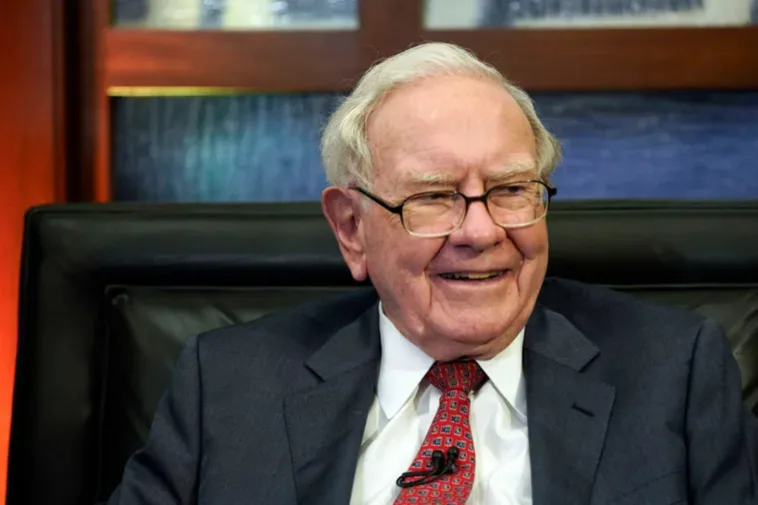Berkshire Hathaway, led by the legendary investor Warren Buffett, has become synonymous with long-term success and value investing. This article delves into the remarkable story of Berkshire Hathaway, tracing its evolution from its early years to its status as a conglomerate powerhouse today. By exploring Warren Buffett’s leadership, the company’s transformation, investment strategies, financial performance, and its impact on the investing community, we gain valuable insights into this iconic conglomerate’s journey.
I. Early Years of Berkshire Hathaway
Origins and background
In 1839, Berkshire Hathaway began its humble journey as a textile manufacturing company, founded by Oliver Chace in Rhode Island. Initially known as the Valley Falls Company, it would later merge with Hathaway Manufacturing Company, eventually adopting the name Berkshire Hathaway.
Acquisition of Berkshire Hathaway
Warren Buffett, then a young investor, recognized the potential in Berkshire Hathaway and began accumulating shares in the struggling textile company in the 1960s. However, faced with declining prospects in the textile industry, Buffett made a significant decision that would reshape the company’s future.
The transition from textiles to insurance
Acknowledging the fading fortunes of the textile business, Buffett redirected Berkshire Hathaway’s focus towards insurance. In 1967, he acquired National Indemnity Company and used it as a platform to expand into the insurance sector. This pivotal shift laid the foundation for Berkshire Hathaway’s transformation into a conglomerate.
II. Transformation into a Conglomerate
Expansion of the investment portfolio
Under Warren Buffett, Berkshire Hathaway expanded its investment portfolio beyond insurance, venturing into a wide array of industries. The company’s strategy involved acquiring businesses with strong fundamentals and long-term growth potential.
Key acquisitions and investments
- Coca-Cola Company: One of Berkshire Hathaway’s most notable investments is its substantial stake in the Coca-Cola Company. Recognizing the brand’s enduring popularity and global reach, Buffett’s company acquired a significant position in Coca-Cola, becoming one of its largest shareholders.
- See’s Candies: Berkshire Hathaway’s acquisition of See’s Candies in 1972 exemplifies Buffett’s preference for high-quality businesses with durable competitive advantages. See’s Candies’ strong brand recognition and loyal customer base have continued to contribute to Berkshire Hathaway’s success.
- Dairy Queen: In 1997, Berkshire Hathaway acquired Dairy Queen, a well-established chain of ice cream and fast-food restaurants. This investment further diversified the company’s holdings and demonstrated its confidence in the enduring appeal of beloved consumer brands.
- Geico: Perhaps one of the most significant acquisitions in Berkshire Hathaway’s history was its complete acquisition of Geico, the auto insurance giant. This purchase allowed Berkshire Hathaway to expand its insurance business significantly and capitalize on Geico’s market-leading position.
- Precision Castparts Corp.: In 2016, Berkshire Hathaway acquired Precision Castparts Corp., a leading supplier of aerospace and industrial components. This strategic move further diversified the company’s portfolio, enabling it to tap into the growing demand for precision manufacturing in various industries.
Development of the Berkshire Model
Berkshire Hathaway’s success can be attributed, in part, to the development of the “Berkshire Model.” This model involves acquiring and holding companies with strong intrinsic value, allowing them to operate autonomously while benefiting from the resources and support of Berkshire Hathaway’s broader network.
III. Long-Term Investment Strategy
Focus on value investing
Warren Buffett’s investment philosophy centres around value investing, which involves identifying undervalued assets and holding them for the long term. Berkshire Hathaway seeks out companies with durable competitive advantages, strong management teams, and attractive growth prospects.
Holding philosophy and buy-and-hold approach
Berkshire Hathaway’s buy-and-hold strategy is a cornerstone of its investment philosophy. Buffett believes in the power of compounding returns over time, and thus, the company tends to hold investments for extended periods, even in the face of short-term market fluctuations.
Influence on other investors
Warren Buffett’s investment prowess and his annual shareholder letters have earned him a dedicated following of investors who closely analyze his moves. Known as the “Buffett Effect,” his actions and insights often have a significant impact on market sentiment and investment trends.
IV. Financial Performance and Key Metrics
Performance during economic downturns
- Dot-com bubble (early 2000s): During the dot-com bubble of the early 2000s, Berkshire Hathaway’s disciplined approach and focus on intrinsic value shielded the company from significant losses compared to many other market participants.
- The global financial crisis (2008-2009): The global financial crisis tested Berkshire Hathaway’s resilience, but the company’s strong capital position, prudent risk management, and ability to take advantage of distressed opportunities allowed it to weather the storm relatively well.
- COVID-19 pandemic (2020-2021): The COVID-19 pandemic posed unprecedented challenges for businesses worldwide. While Berkshire Hathaway faced headwinds in certain sectors, its diversified portfolio, cash reserves, and opportunistic investments positioned the company for recovery and future growth.
V. Warren Buffett’s Leadership and Philosophy
Buffett’s investment principles
Warren Buffett’s investment principles encompass a focus on long-term value, patience, discipline, and a thorough understanding of businesses before investing. His emphasis on rational decision-making and avoiding speculative behaviour has guided Berkshire Hathaway’s success.
Berkshire Hathaway’s corporate culture
Buffett has cultivated a unique corporate culture at Berkshire Hathaway, characterized by decentralization, long-term thinking, ethical conduct, and a commitment to transparency. This culture fosters a sense of ownership among Berkshire Hathaway’s subsidiaries.
Succession planning and future prospects
With Warren Buffett’s advancing age, succession planning has become a critical concern. Buffett and the Berkshire Hathaway board have taken steps to ensure a smooth transition of leadership, highlighting the company’s commitment to maintaining its success beyond Buffett’s tenure.
VI. Criticisms and Challenges
Critiques of Berkshire Hathaway’s Strategy
Berkshire Hathaway has faced criticism for its conservative cash management approach and missed opportunities in certain technology sectors. Critics argue that the company’s size and investment style may limit its ability to achieve rapid growth compared to more agile competitors.
The decline in performance compared to previous years
In recent years, Berkshire Hathaway’s performance has lagged behind broader market indices, prompting discussions about the company’s ability to deliver superior returns over the long term. Factors such as the low-interest-rate environment and the changing investment landscape have contributed to this decline.
Potential risks and concerns
As Berkshire Hathaway’s business spans multiple industries, it is exposed to various risks such as economic downturns, regulatory changes, and unforeseen events. Furthermore, the concentration of the company’s holdings and the potential challenges associated with finding suitable acquisitions pose ongoing concerns.
VII. Impact and Legacy of Berkshire Hathaway
Influence on the investing community
Warren Buffett’s success and investment philosophy have had a profound impact on the investing community, shaping the way many investors approach the market. His emphasis on long-term value and rational decision-making has inspired generations of investors.
Philanthropic initiatives and charitable contributions
Berkshire Hathaway’s philanthropic endeavours, spearheaded by Warren Buffett and his longtime business partner Charlie Munger, have made a significant impact on society. The company’s commitment to the Giving Pledge and substantial charitable contributions reflect its dedication to giving back.
Lessons learned from Berkshire Hathaway’s journey
The journey of Berkshire Hathaway offers valuable lessons to investors and business leaders. The importance of a long-term perspective, the value of patience and discipline in investing, and the significance of building enduring businesses are just a few takeaways from Berkshire Hathaway’s success story.
VIII. Conclusion
In conclusion, Berkshire Hathaway’s evolution from a struggling textile company to a diversified conglomerate is a testament to the leadership and investment acumen of Warren Buffett. While the company has faced challenges and criticisms, its track record, long-term investment strategy, and philanthropic efforts leave a lasting legacy in the business and investing world.
Berkshire Hathaway’s journey serves as a source of inspiration, offering insights and lessons that can guide investors and businesses seeking sustainable success. As the company continues to adapt and navigate the ever-changing landscape, its future outlook and challenges will shape its trajectory, ensuring that Berkshire Hathaway remains a compelling entity to examine for years to come.







